HPS ZOC Examples
This series of tests will show the basic rules for retreat when the Weak ZOC optional rule is 'On' or 'Off'. In the first tests - Weak ZOC is 'Off'.
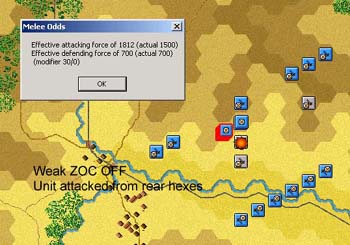
Here we see that the unit is attacked from the rear hexes. Will he retreat forward?
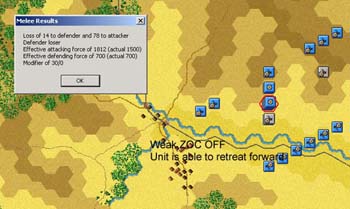
The unit retreated forward. The lack of ZOCs allowed the unit a retreat path. However, in this next sample we will see a unit attacked with only one of the rear hexes open for retreat. Notice that another unit projects a ZOC into that rear hex.
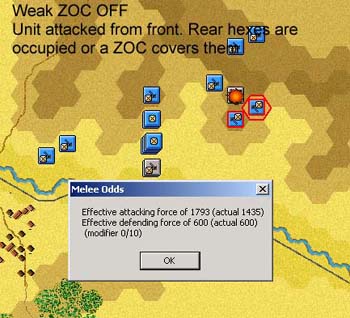
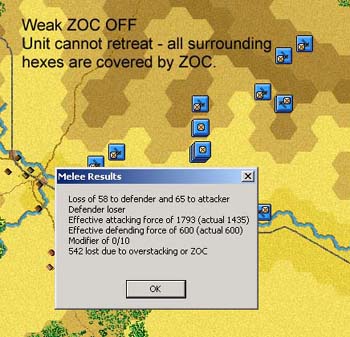
The presence of a unit in the rearmost hex and the ZOC of another unit into the other rear hex allowed the
French to capture the Austrian battalian. In our next example we will see that the rear hexes are covered but one of the flank hexes is open for retreat.
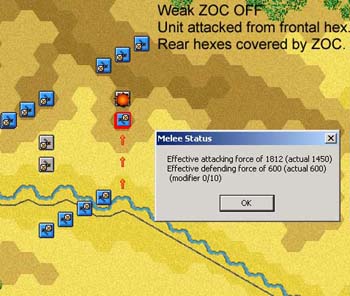
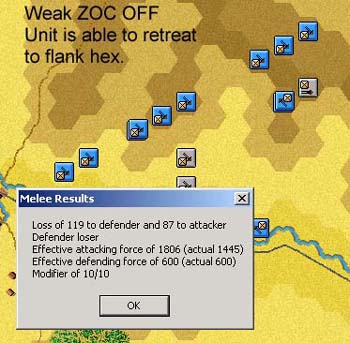
The unit is able to escape due to the flank hex being open. No ZOC or enemy unit occupied that hex.
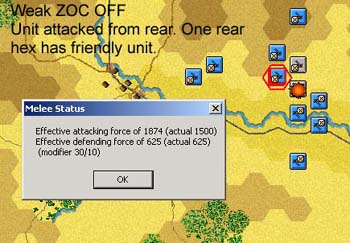
A more complex example. The unit apparently has a friendly unit which it might retreat to in its rear hex.

Indeed the unit was able to escape elimination due to the presence of a friendly unit.
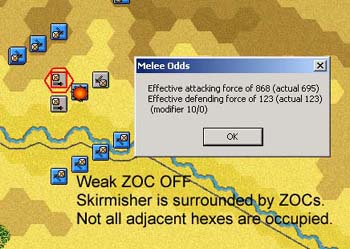
Now we see some examples of the Weak ZOC 'Off'. In this case the skirmisher is surrounded by ZOCs.
Will it be able to retreat to one of the open hexes?
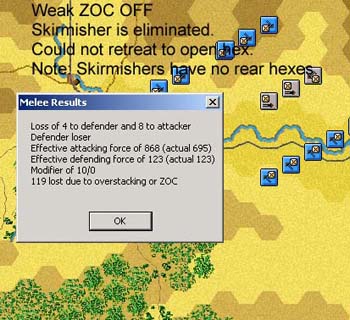
No, it was eliminated. Whether Weak ZOC is 'On' or 'Off' as long as all hexes surrounding
a skirmisher are occupied they will be eliminated if the melee is successful.
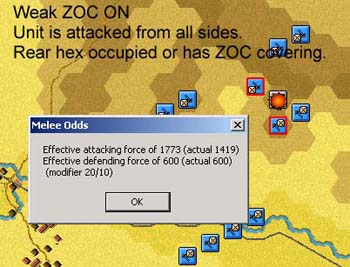
Again the Weak ZOC is 'On'. The unit is surrounded on all sides. Like example #1 the unit has no open retreat route.
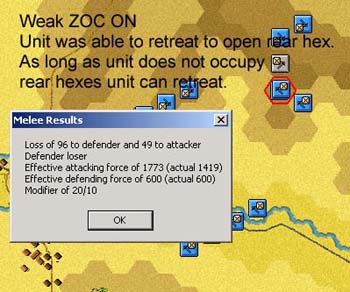
However, one of the rear hexes was not occupied hence the unit was able to retreat despite the presence of an enemy unit.
Conclusions
Weak ZOC 'Off':
1. As long as all Rear hexes are either occupied or covered by a ZOC AND the front
and flank hexes are likewise covered by units or ZOCs the unit will not be able to retreat.
Should one of the hexes not have a ZOC extending into it then the unit can retreat.
2. If the Rear hexes are not occupied or covered by ZOCs then the unit can retreat and
likewise just because unit occupy both Rear hexes doesnt mean that the unit will be eliminated.
If the front and flank hexes are open then retreat is possible.
3. Skirmishers can retreat into any adjacent hex as long as a ZOC doesnt extend into it.
Weak ZOC 'On':
1. Unless a unit occupies the rear hexes the unit can always retreat unless the rear hexes
are composed of terrain that the unit cannot move into.
2. Skirmishers can retreat into any adjacent hex as long as a ZOC doesnt extend into it.
Summary
The major difference between having Weak ZOC ON or OFF is that with it ON you must occupy
the rear hexes and with it OFF only a ZOC is needed to deny the unit a retreat route.
[Written by Bill Peters.]

